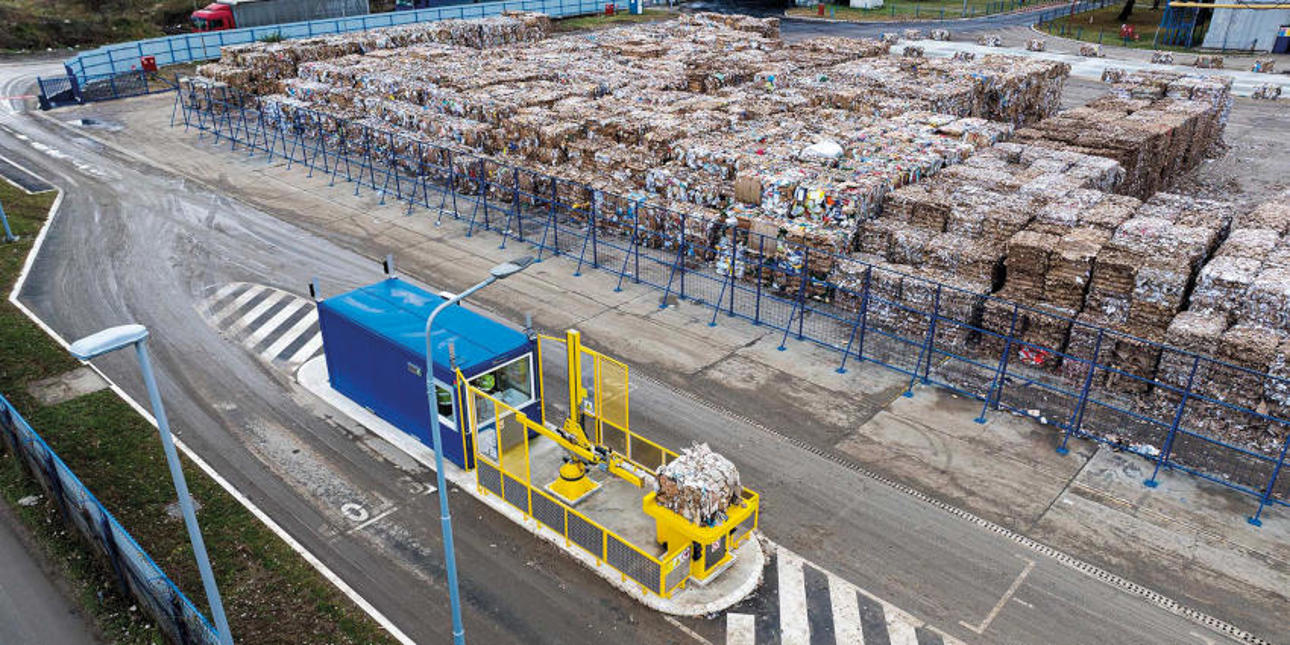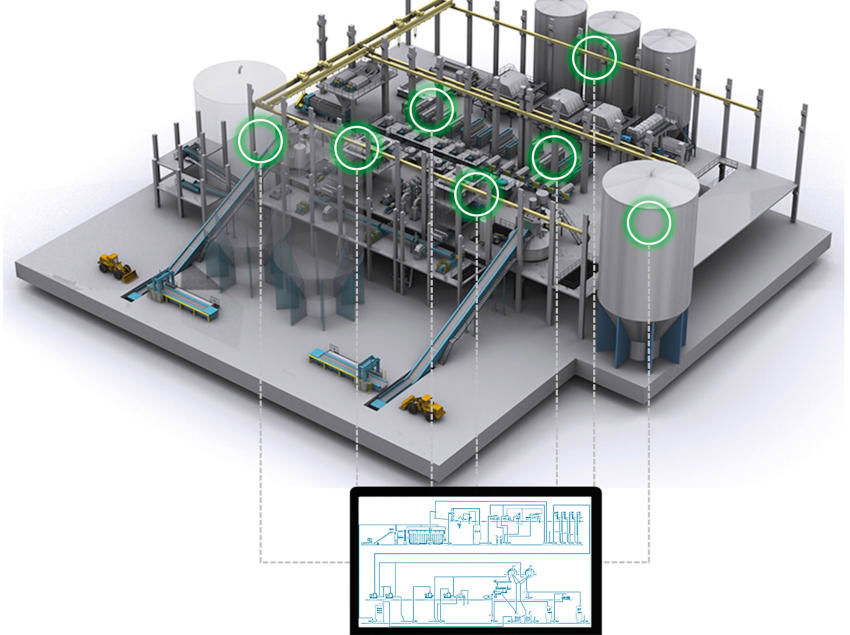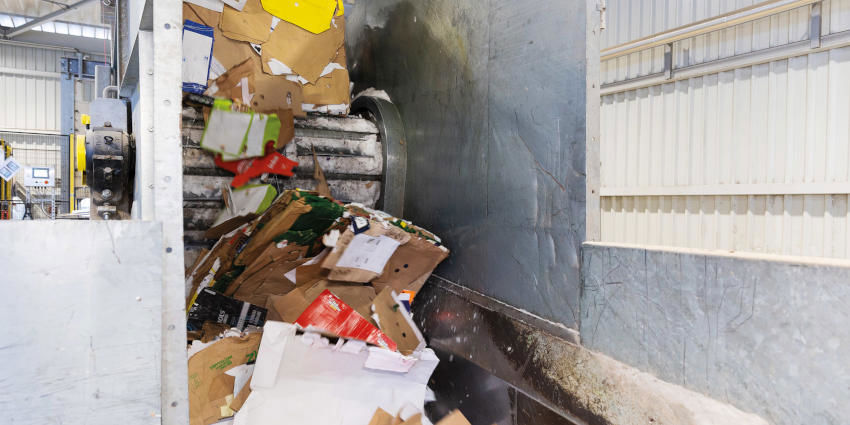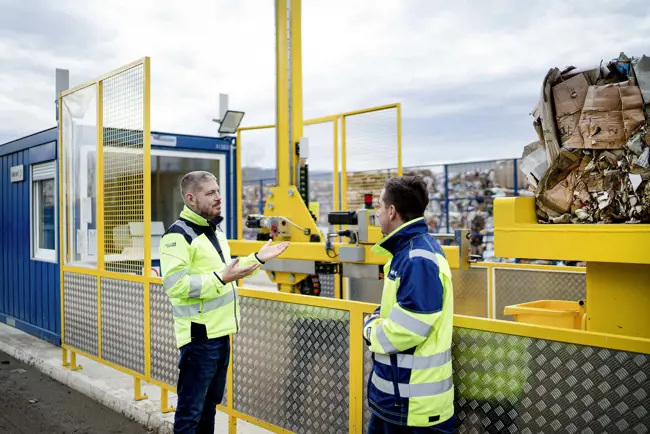From OCC to board and beyond
Apr 24, 2024
Today’s board makers aim for stable production and consistent end-product quality. At the same time, the increasing variety of recycled raw materials in OCC lines makes this more difficult. How can you control the production process despite these variations?

Hanna Jokinen, Vice President, Stock Preparation and Recycled Fiber, Valmet, and Hannu Lätti, Sales Director, Industrial Internet and Automation Solutions, Valmet, explain how advanced methods can be used to optimize recycled fiber-based board production.
With the OCC to Board concept, we are targeting total process optimization from raw materials to final products for every board grade.
“Traditionally, board makers know very little about the actual quality level of the bales of raw material they receive,” explains Lätti. “When a bale is fed onto their OCC plant conveyer, typically they will only know the nominal grade of the bale based on the storage area the bale was taken from. This means that production processes are based on assumptions about raw material composition. Given the increasing pressure to recycle more kinds of raw materials, like paper cups and other fiber-based food packaging, this inevitably leads to compromises in the process. However, with today’s advanced tools, raw material quality variation can be managed in intelligent ways.”

“With the OCC to Board concept, we are targeting total process optimization from raw materials to final products for every board grade,” says Jokinen. “We have a range of analyzers that allow us to follow material development throughout its journey from new or recycled raw materials to the final products.”
Accurate data from every truck load of bales
Each truck load of OCC bales is delivered with records that include its ID number and nominal grade. However, the grade doesn’t specify the exact composition or quality of the bales. “An essential part of detailed mass balance and yield calculations is knowing the quality of OCC bales we are feeding into OCC plant,” says Lätti. “You need to have accurate information about raw material bale quality and fiber quality to manage quality variations and optimize your line.”
“We can measure bale quality using a Valmet Bale Tester. This takes samples from bales in each truck load when it arrives at the mill and analyses them using near infrared technology. This gives us data about the ash, moisture and plastics content, as well as the lignin content of the bales in that load. The yard management system automatically links the data to the bale truck load ID and, using GPS tracking, the bale load will be assigned the correct location in the storage yard based on its quality and composition, for example, its plastics content. This means that the production manager can select the right bale load for production needs, based on its quality and content.”
Maximizing OCC yield
The OCC to Board concept relies on data gathered from the production process. “When we combine flow, consistency, and fiber quality data with raw material data, we have the opportunity to manage the raw material quality in the OCC line in terms of yield,” says Jokinen. “We can utilize an advanced mass balance calculation, which allows us to estimate and maximize yield of the OCC. With this method, we use data from process measurements, sensors and quality analyzers that are installed throughout the line to create a comprehensive OCC plant mass balance model.”

With today’s advanced tools, raw material quality variation can be managed in intelligent ways.
“We use Valmet Mill Wide Optimization methodology and technology to build the model, and this combines all unit operations together to understand the relationship between the different processes. We run the model in real time, in parallel with the actual physical process. By using this Digital Twin of the OCC plant, we can get accurate, real-time information about the total mass balance, which allows us to accurately estimate the OCC plant yield. This information is the basis for optimization and maximizing OCC yield without compromising board quality or the stability of production.”
Online fiber quality measurement
“To measure fiber quality, we can install fiber quality analyzers throughout the line, like the Valmet Fiber Furnish Analyzer and Valmet Pulp Expert. These advanced analyzers give us lots of information about the fiber quality and development, and in case of Valmet Pulp Expert also sheet strength,” says Jokinen.
“We integrate the bale quality data with this fiber quality data, and other production line sensor data, to calculate real-time predictions of the final strength and other quality parameters,” adds Lätti. “We link the bale quality data to fiber quality data and fiber quality data to final board quality because it enables us to react quickly and adjust the bale recipe if we notice undesirable changes in the fiber quality. If you only look at changes in board quality, the delay would be too long for active control of the bale mix.”
Optimizing the whole production chain
With these methods, data from each stage of production can be linked and used to optimize OCC plant yield and final board quality. “In principle, this approach can be extended beyond the OCC line and board machine, further along the production chain, to integrate quality data from the corrugator plant, as well. This would open up many new possibilities for optimization,” concludes Lätti.
Text Peter Cura
Related articles

